Student Project done by:
Lixiang ZHAI
The slides can be downloaded here
Introduction
Phytochemistry study of CP leaves
-Flavonoids
-Phenolic acids
-Triterpenoids
-Carbohydrates
-Polysaccharides
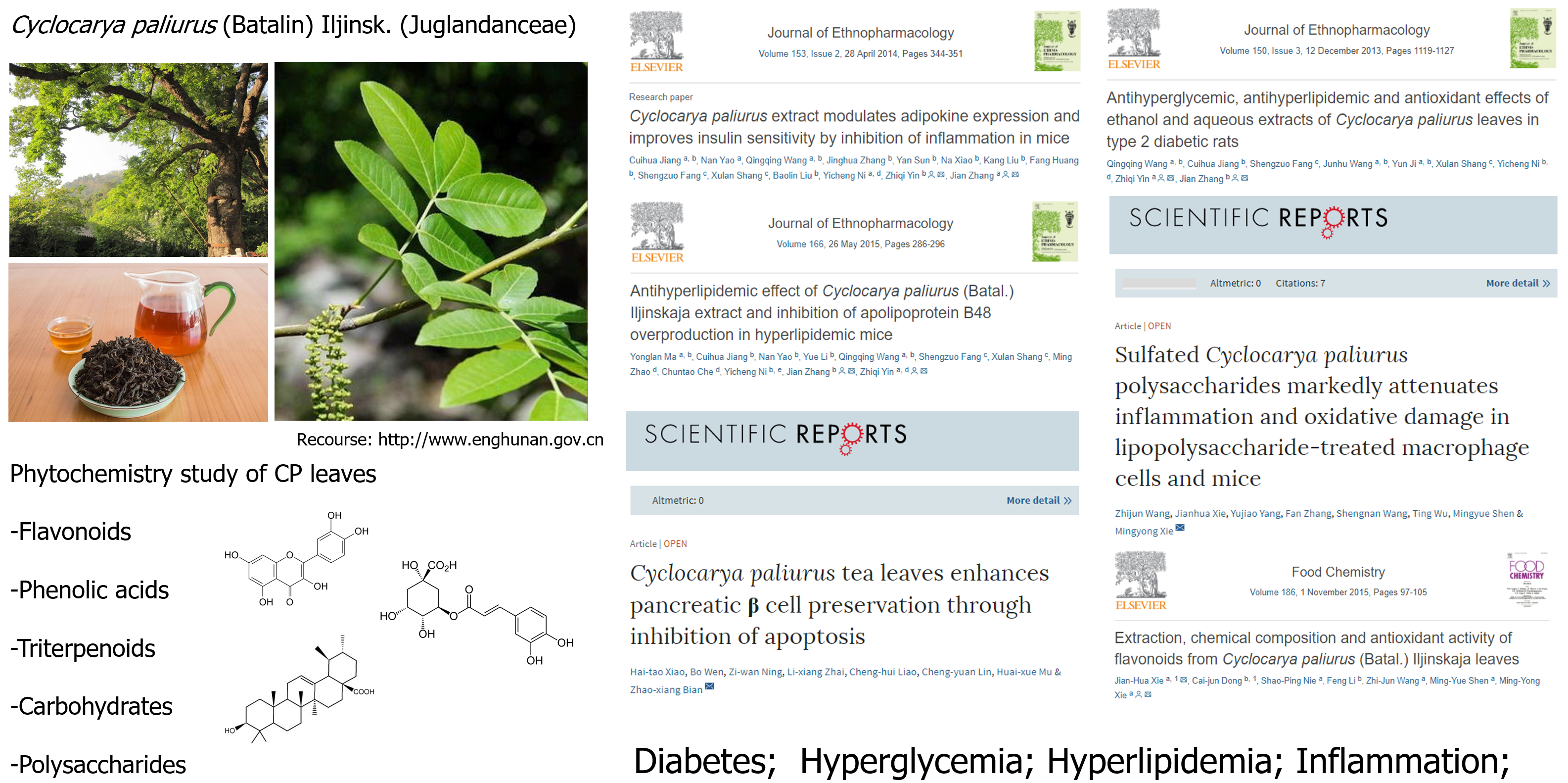
Terminology & Objective
Metabolomics/Lipidomics
The metabolome represents the collection of all metabolites in a biological cell, tissue, organ or organism, which are the end products of cellular processes. The metabolomics is the study of their small-molecule metabolite profiles. In this study, we use lipidomics approach to specifically investigate lipids profiles under CP treatment.
Pharmacokinetics
is a branch of pharmacology dedicated to determining the fate of substances administered to a living organism. In this study, we will build phytochemical profiles of CP and compare the CP constituents in plasma samples to identify the CP constituents which ingested in plasma.

Result
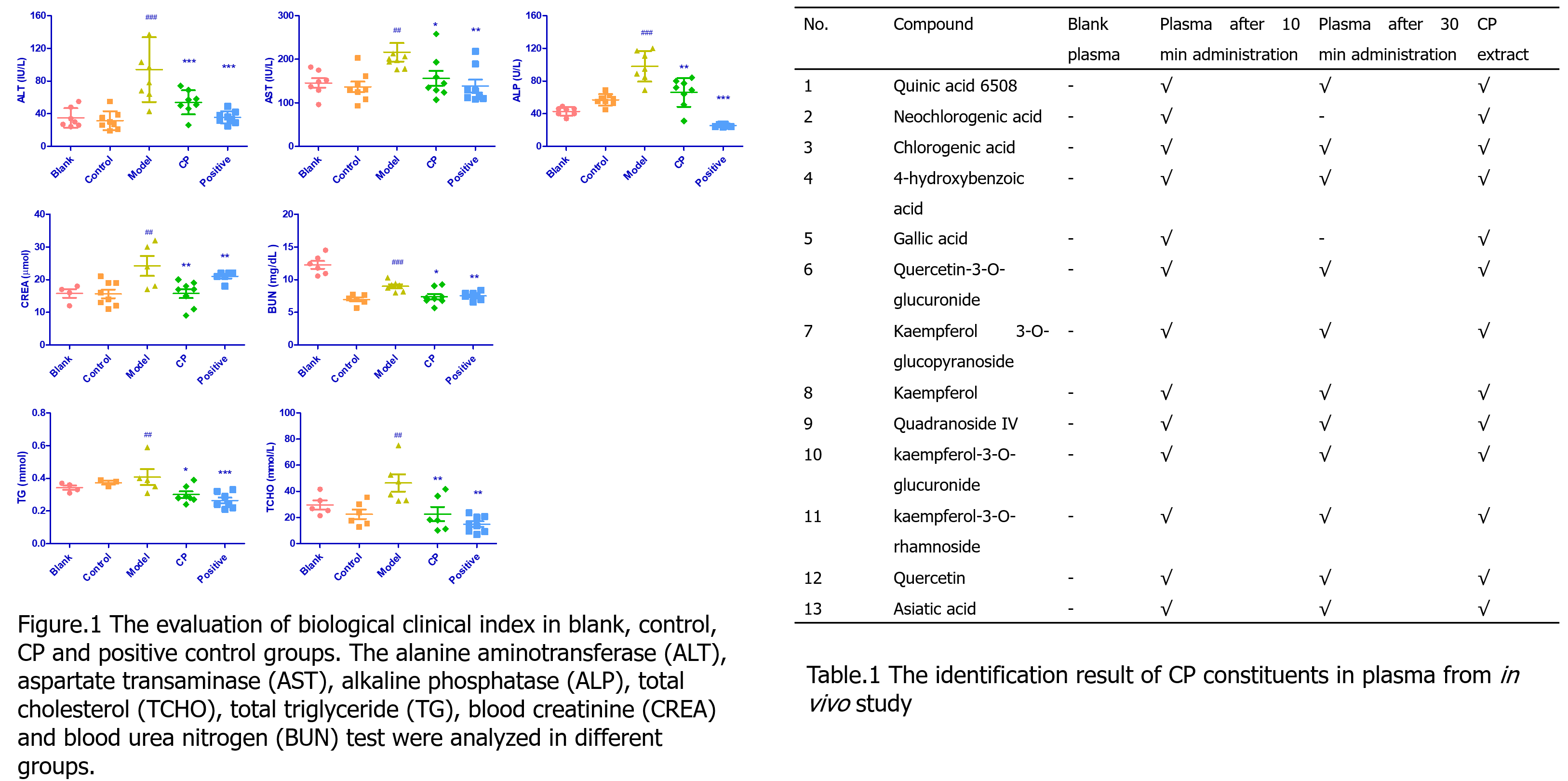
Figure.2 the lipidomics study on serum from diabetic mice
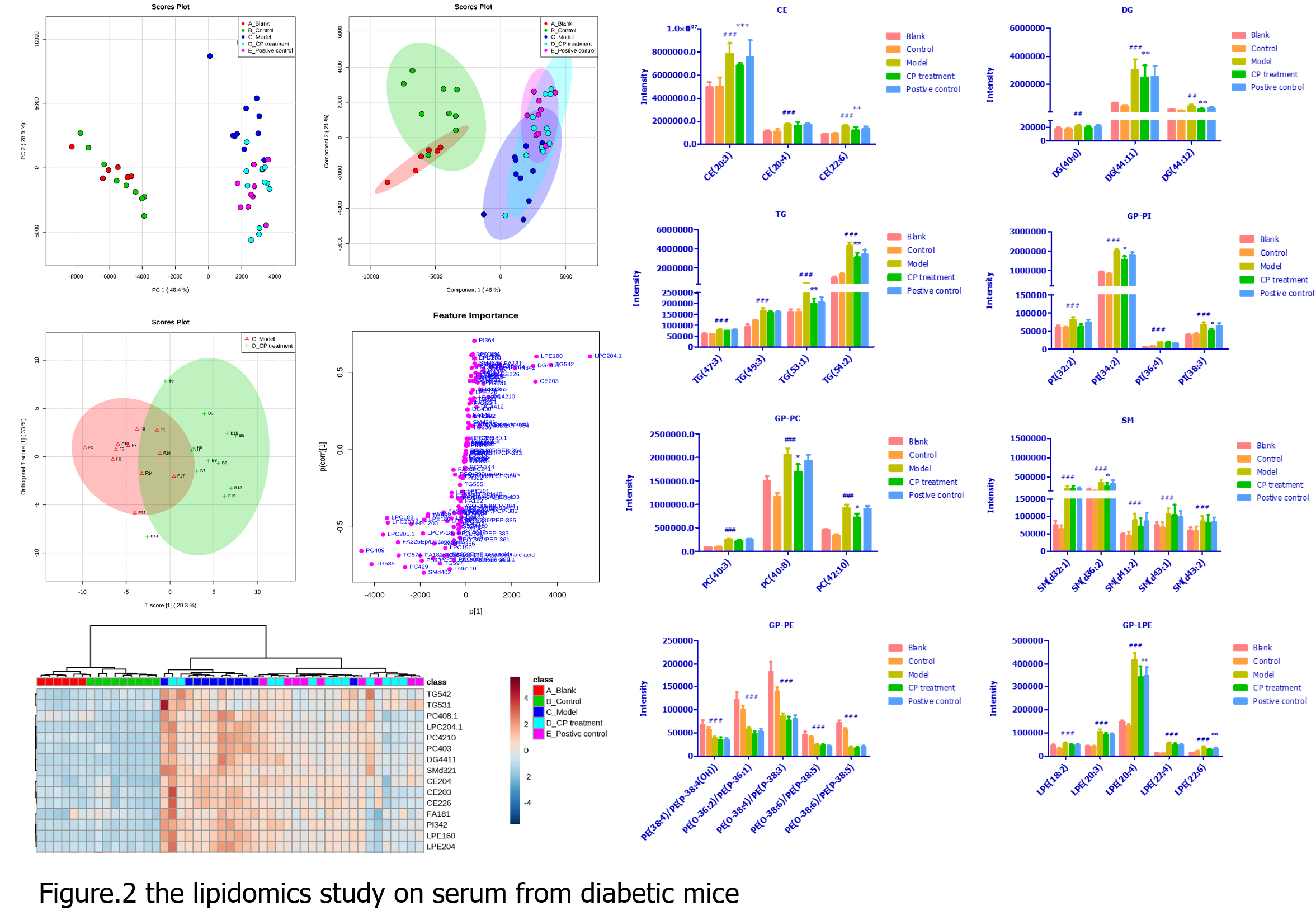
Figure.3 the selected lipids network analysis under CP treatment

Figure.4 the protein-protein interactions between (a) lipids, (b) recognized components and lipids
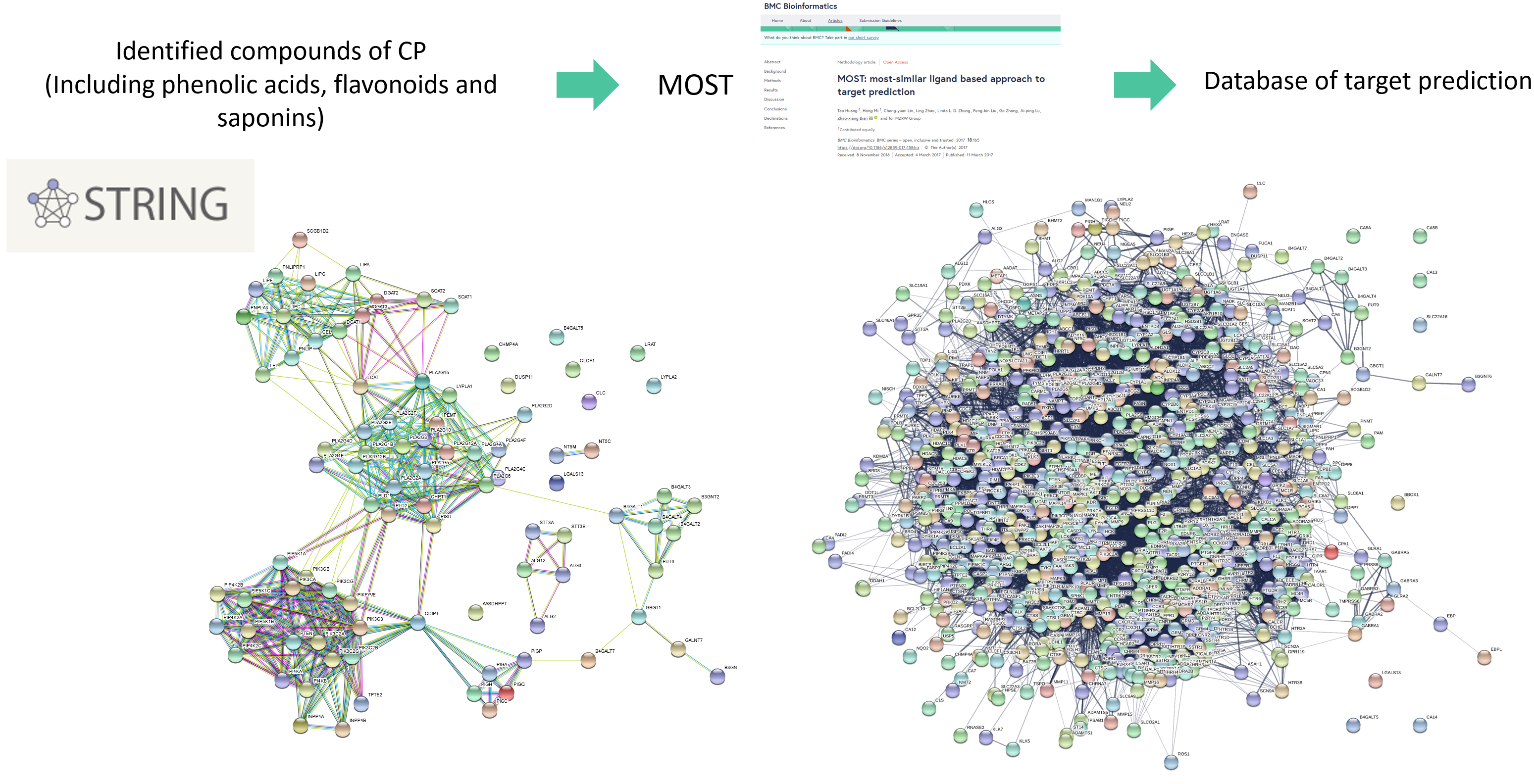
Table.2 The effect of direct target of CP components on in-direct lipids targets
Flavonoids: Kaempferol; Quercetin
Phenolic acids: quinic acid; neochlorogenic acid; chlorogenic acid; gallic acid; 4-hydroxybenzoic acid
Saponins: Quadranoside IV, Asiatic acid
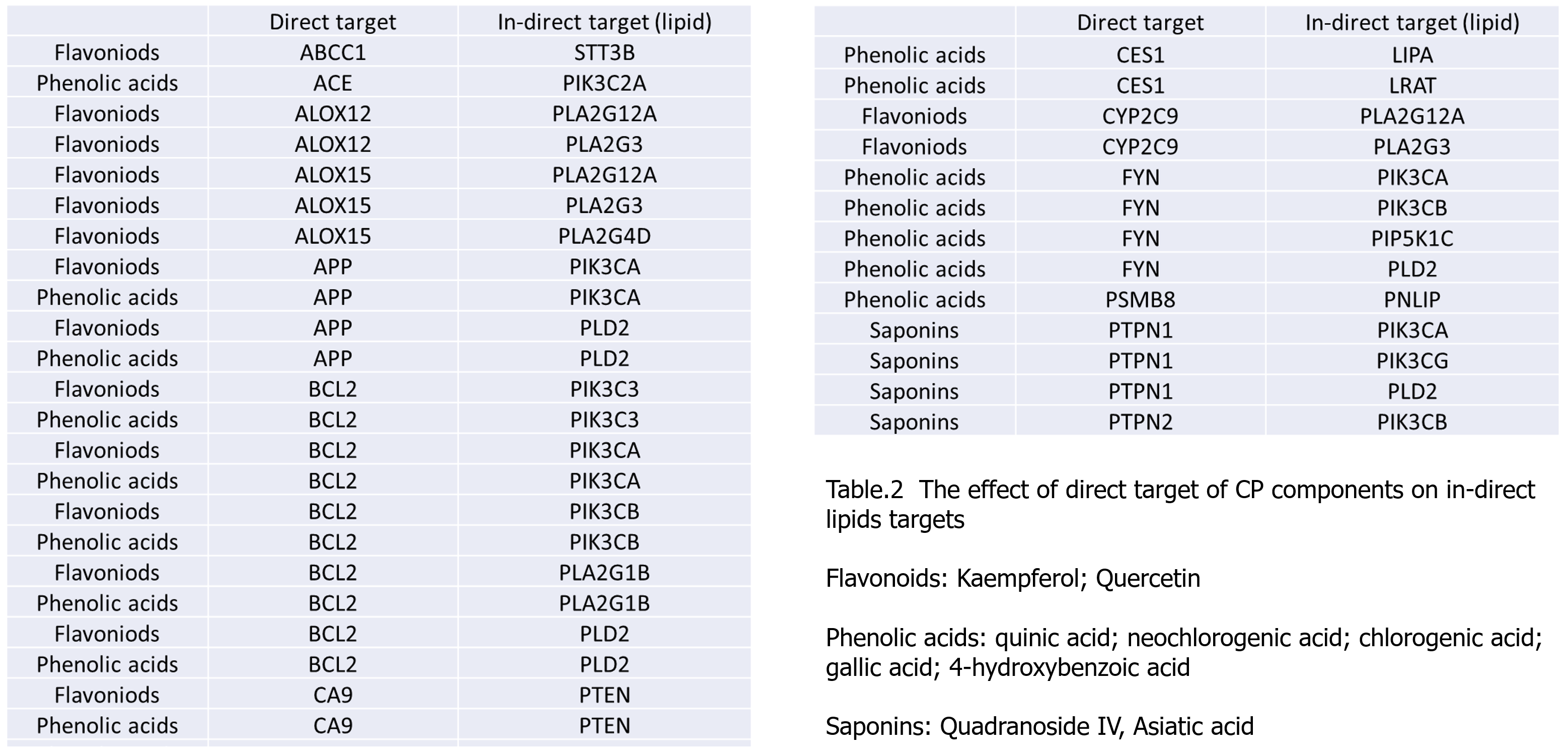
- Flavonoids: PIK3CA, PIK3CB, PIK3C3
- Phosphatidylinositol: 3-kinase, PLD2
Phospholipase D:PLAG3, PLA2G4D, PLA2G3 and PLA2G12A, Phospholipase A(2)
Phenolic acids:PIK3CA, PIK3C2A, PIK3CG, PIK3CB, PIK3C3
Phosphatidylinositol 3-kinase, Phosphatidylinositol-4,5-bisphosphate3-kinase, PLD2
Phospholipase D, PLA2GB
Phospholipase A(2), LRAT
Phosphatidylcholine-retinol-O-acyltransferase, PNLIP
Triacylglycerol lipase, LIPA
Carboxylesterase, LIPA